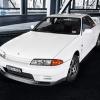March Motor "gtr Returns"
Announcements
-
Similar Content
-
Latest Posts
-
haha yeah those or the KiwiCNC ones.. but I need to go buy that lotto ticket you mentioned (and win) to afford them. They do seem like a really good thing though - especially with the R35 bearing upgrade.
-
By Dose Pipe Sutututu · Posted
I'm good at suggesting things that cost more than what they should. https://www.brypar.com/shop/prime-r/prime-r-uprights/nissan-skyline-r32-34-gtr-front-upright/ -
By Dose Pipe Sutututu · Posted
I saw on your IG page! Mate, how lucky are you - go buy the lotto. -
I have been wondering the same thing. Ikeya Formula here. Add A050's and they are under a lot more strain than stock - plus that lever as you point out. Still you'd think you'd hear more about it.
-
I am starting to think that it has to do with the tie rod correctors. The forces between the tie rod and the steering arm are supposed to be close together (in the vertical direction). Spacing the tie rods down adds in a larger amount of torque, from the force being applied further away (ie, further down) and it appears that the casting will sometimes just say, "nope".
-


.thumb.jpg.1b7f9b555236b5ea56c3fed20c733de8.jpg)





Recommended Posts
Create an account or sign in to comment
You need to be a member in order to leave a comment
Create an account
Sign up for a new account in our community. It's easy!
Register a new accountSign in
Already have an account? Sign in here.
Sign In Now